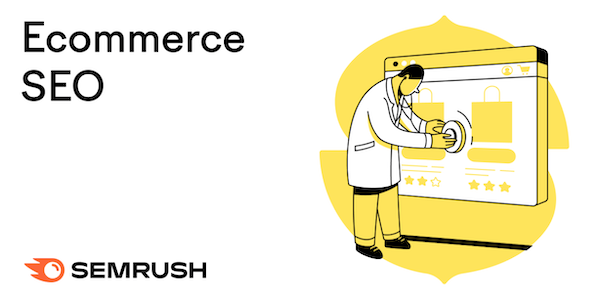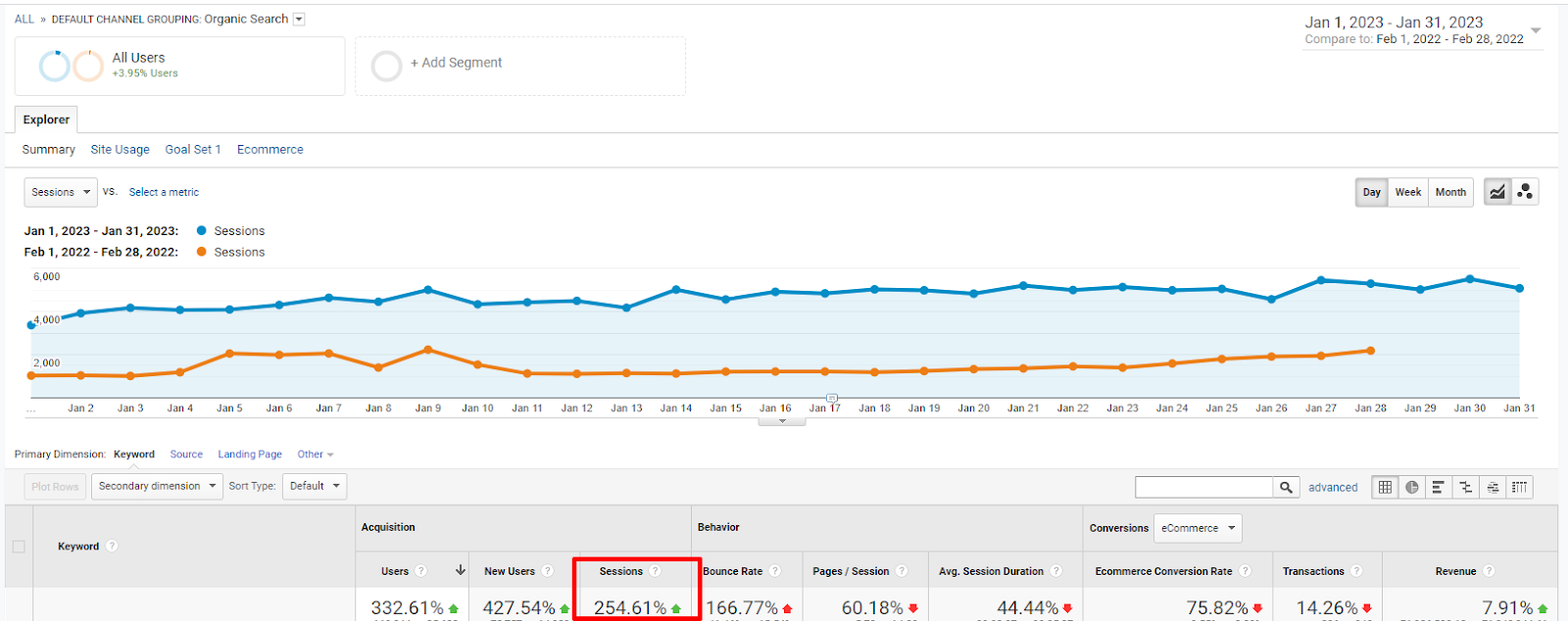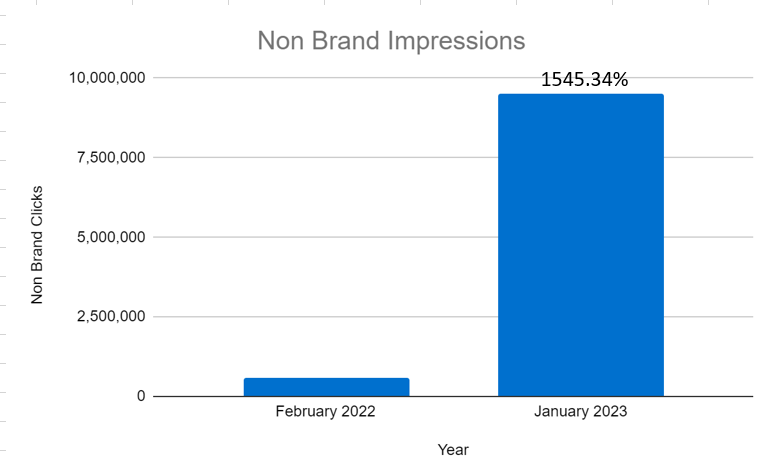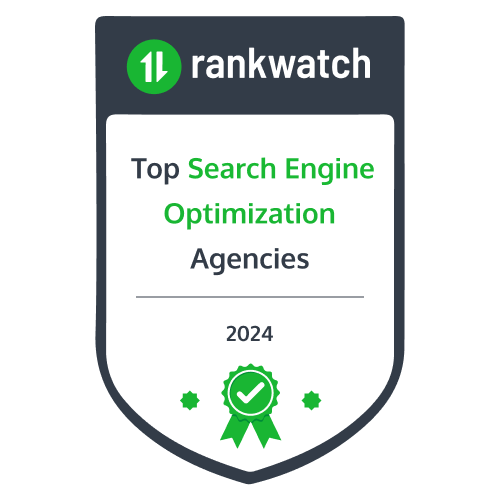
In today’s digital marketplace, Search Engine Optimization (SEO) has evolved far beyond simply improving website rankings. It has become a powerful sales engine that can transform how businesses attract, engage, and convert customers. While many companies view SEO as a marketing expense, forward-thinking organizations recognize it as a direct revenue driver that delivers measurable returns on investment.
The relationship between SEO and sales isn’t always immediately apparent, but the connection runs deep. When executed strategically, SEO doesn’t just bring more visitors to your website—it brings the right visitors at the right moment in their buying journey. This targeted approach to customer acquisition makes SEO one of the most cost-effective methods for driving sustainable business growth.
Understanding the SEO-Sales Connection

The fundamental principle behind SEO’s ability to drive sales lies in intent-based marketing. Unlike traditional advertising that interrupts potential customers, SEO captures people who are actively searching for solutions. When someone types “best project management software for small businesses” into Google, they’re not casually browsing—they’re demonstrating purchase intent.
This intent-driven nature of search creates a unique opportunity for businesses. By optimizing for keywords that indicate buying interest, companies can position themselves directly in front of motivated prospects. The result is higher conversion rates, shorter sales cycles, and more qualified leads compared to other marketing channels.
Consider the difference between a billboard advertisement and a search result. The billboard might be seen by thousands of people, but most aren’t actively looking for that product or service. A search result, however, is only seen by people who have specifically requested information about that topic. This fundamental difference explains why SEO often outperforms traditional advertising in terms of return on investment. Leveraging sales integrations can help you sell more.
The Customer Journey and SEO Touchpoints
Modern customers don’t make purchasing decisions in a straight line. They follow a complex journey that includes awareness, consideration, and decision phases. SEO plays a crucial role at each stage, providing the right information at the right time to guide prospects toward a purchase.
During the awareness stage, potential customers often search for educational content. They might look for “what is customer relationship management” or “small business accounting challenges.” Companies that create comprehensive, helpful content for these searches establish themselves as trusted authorities while capturing early-stage prospects.
The consideration phase involves more specific searches as customers evaluate options. Queries like “HubSpot vs Salesforce comparison” or “best email marketing platforms 2025” indicate people who are actively researching solutions. Businesses that optimize for these comparison and evaluation terms can influence decision-making at a critical moment.
Finally, the decision phase features highly specific, purchase-ready searches such as “HubSpot pricing plans” or “buy QuickBooks online.” These transactional keywords represent the highest-intent traffic and often convert at rates of 10-20% or higher when properly optimized.
Keyword Strategy for Sales-Driven SEO
Effective SEO for sales requires a sophisticated understanding of keyword intent and strategic targeting. Not all keywords are created equal when it comes to driving revenue. The key is identifying and prioritizing terms that indicate commercial intent while balancing search volume with competition levels. Consider conducting in-depth analytics using keyword ranking templates to clearly see what queries bring the most impact.
Commercial keywords fall into several categories, each serving different purposes in the sales funnel. Informational keywords like “how to choose accounting software” might not convert immediately, but they build brand awareness and establish expertise. Navigational keywords such as “Slack login” or “Adobe Creative Suite download” often indicate existing customers or highly interested prospects.
The most valuable keywords for sales are transactional terms that signal immediate purchase intent. These include phrases with modifiers like “buy,” “price,” “cost,” “review,” “comparison,” “best,” and “vs.” A local restaurant might target “best Italian restaurant near me,” while a software company might focus on “project management software pricing.”
Long-tail keywords deserve special attention in sales-focused SEO strategies. While “accounting software” might have enormous search volume, it’s highly competitive and less specific. “Cloud-based accounting software for construction companies under $100/month” has lower volume but much higher conversion potential because it targets a specific need with clear commercial intent.
Geographic modifiers add another layer of sales relevance, particularly for local businesses. “Plumber in Denver,” “wedding photographer Chicago,” or “tax accountant near me” combine location with service, creating highly targeted traffic that often converts well.
Content Marketing That Converts
Creating content that ranks well and drives sales requires balancing SEO optimization with genuine value delivery. The most effective sales-driving content addresses real customer problems while naturally incorporating target keywords and guiding readers toward purchasing decisions.
Product comparison articles represent one of the most powerful content types for driving sales. When someone searches “Shopify vs WooCommerce,” they’re actively evaluating e-commerce platforms. A comprehensive comparison that fairly evaluates both options while highlighting your preferred solution’s strengths can capture this high-intent traffic.
Case studies and success stories provide social proof while targeting relevant keywords. Case studies and success storytelling provide social proof while targeting relevant keywords, allowing brands to connect with their audience on a deeper level by showcasing real-world impact and measurable results. A marketing agency might create “How We Increased E-commerce Sales by 300% with SEO” targeting phrases like “SEO case study” and “increase online sales.” These pieces demonstrate expertise while showing potential customers what results they might achieve.
Buyer’s guides and resource pages serve dual purposes by ranking for educational searches while positioning products as solutions. “The Complete Guide to Email Marketing Software” can rank for informational queries while featuring your platform prominently in recommendations and comparisons.
Problem-solution content addresses specific pain points that your product or service solves. A cybersecurity company might create “How to Protect Your Business from Ransomware Attacks” that naturally leads readers to consider their security solutions.
Pricing and feature pages require careful optimization because they often target the highest-converting keywords. These pages should provide clear, comprehensive information while addressing common objections and concerns that might prevent purchases.
Technical SEO for E-commerce and Sales
Technical SEO becomes particularly crucial when your website needs to convert visitors into customers. Site speed, mobile optimization, and user experience directly impact both search rankings and conversion rates, creating a compounding effect on sales performance.
Page loading speed affects both SEO rankings and sales conversions. Google considers page speed a ranking factor, but more importantly, every additional second of loading time can reduce conversions by 7% or more. E-commerce sites must optimize images, minimize code, and leverage content delivery networks to ensure fast loading across all devices.
Mobile optimization extends beyond responsive design to encompass the entire mobile buying experience. With mobile commerce accounting for over half of online sales, ensuring smooth navigation, easy checkout processes, and fast loading on mobile devices is essential for both rankings and revenue.
Structured data markup helps search engines understand your content while enhancing search results with rich snippets. Product schema can display prices, ratings, and availability directly in search results, increasing click-through rates and attracting more qualified traffic.
Internal linking strategy becomes a sales tool when implemented thoughtfully. Linking from high-traffic informational content to product pages can guide visitors through the conversion funnel. A blog post about “small business marketing challenges” might link to relevant software solutions, creating natural pathways to purchase.
Site architecture should reflect the customer journey, with clear navigation from broad topics to specific solutions. A logical flow from problem identification to solution evaluation to purchase decision helps both search engines and customers understand your offerings.

Local SEO for Physical and Service Businesses
Local SEO represents one of the most direct connections between search optimization and sales, particularly for businesses with physical locations or service areas. Local searches often indicate immediate purchase intent, making them extremely valuable for driving revenue.
Google My Business optimization forms the foundation of local SEO success. Complete profiles with accurate information, regular updates, and customer reviews significantly impact local search visibility. Businesses that maintain active GMB profiles see 70% more location visits and 50% more website visits compared to those with basic listings.
Local keyword targeting requires understanding how customers search for nearby businesses. Instead of just targeting “restaurant,” a local establishment should optimize for “family restaurant downtown Portland” or “best pizza delivery 97210.” These location-specific terms often convert better because they indicate immediate need and proximity.
Review management directly impacts both local SEO rankings and customer decision-making. Positive reviews improve search visibility while providing social proof that influences purchasing decisions. Businesses with 4+ star ratings receive 70% more clicks than those with lower ratings.
Local content marketing can capture location-based searches while demonstrating community involvement. A real estate agent might create “Portland Neighborhood Guide 2025” or “Best Schools in Beaverton Oregon” to attract local prospects while establishing expertise.
Citation building across local directories ensures consistent business information while improving local search authority. However, the focus should be on quality directories that potential customers actually use, rather than simply accumulating as many citations as possible.
Measuring SEO’s Impact on Sales
Tracking SEO’s contribution to sales requires sophisticated measurement approaches that go beyond traditional SEO metrics. While rankings and traffic matter, the ultimate measure of success is revenue attribution and return on investment.
Google Analytics 4 provides powerful tools for tracking the customer journey from search to sale. Setting up proper conversion tracking allows you to see which keywords, pages, and traffic sources contribute most to revenue. Multi-channel funnels reveal how SEO works alongside other marketing channels to drive sales.
Organic search attribution often extends beyond direct conversions. Many customers discover brands through organic search but complete purchases through direct visits or other channels. Understanding this assisted conversion behavior provides a more complete picture of SEO’s sales impact.
Customer lifetime value (CLV) metrics reveal SEO’s long-term impact on business growth. Customers acquired through organic search often have higher retention rates and lifetime values compared to those from paid advertising, making SEO investments more valuable over time.
Revenue per visitor metrics help identify the most valuable SEO content and keywords. Pages that attract high-converting traffic deserve additional optimization investment, while low-converting content might need restructuring or better calls-to-action.
A/B testing on SEO-driven pages can improve conversion rates while maintaining search rankings. Testing different headlines, calls-to-action, and page layouts helps optimize for both search engines and sales conversions.

Real-World Success Stories

Examining concrete examples of SEO driving sales provides valuable insights into effective strategies and measurable results. These case studies demonstrate how different businesses have leveraged search optimization to achieve significant revenue growth.

SaaS Company Transformation: A mid-sized project management software company increased annual recurring revenue by 340% over 18 months through strategic SEO. They focused on comparison keywords like “Asana vs Monday.com” and buyer’s guide content such as “best project management software for agencies.” By creating comprehensive, unbiased comparisons that highlighted their unique features, they captured high-intent traffic that converted at 12% compared to their previous 3% average.
The company’s approach included detailed competitor analysis, identifying gaps in existing comparison content, and creating superior resources that genuinely helped prospects make informed decisions. They also optimized for long-tail keywords specific to different industries and use cases, such as “project management software for construction companies” and “marketing agency project tracking tools.”
E-commerce Revenue Surge: An online retailer of outdoor equipment grew organic sales from $50,000 to $400,000 monthly by implementing comprehensive SEO strategies. Their success came from optimizing product pages for specific gear searches, creating extensive buyer’s guides, and targeting seasonal keywords.
Key strategies included optimizing for product-specific long-tail keywords like “waterproof hiking boots size 11 wide,” creating seasonal content around activities like “winter camping gear checklist,” and developing comprehensive product comparison pages. They also implemented structured data markup that displayed product ratings, prices, and availability in search results, significantly increasing click-through rates.
Local Service Business Growth: A digital marketing agency in Austin grew from $200,000 to $1.2 million in annual revenue primarily through local SEO efforts. They targeted location-specific service keywords like “SEO services Austin” and “digital marketing agency Texas” while creating location-based content about local business challenges and opportunities.
Their approach included claiming and optimizing Google My Business listings, earning reviews from satisfied clients, and creating content that addressed specific challenges faced by Austin-area businesses. They also developed case studies featuring local clients, which ranked well for branded searches and provided social proof for prospects.
B2B Manufacturing Success: A specialized industrial equipment manufacturer increased qualified leads by 280% and sales by 185% through technical SEO and content marketing. They focused on highly specific industrial keywords and created detailed technical resources that demonstrated expertise while capturing search traffic.
Their strategy involved identifying technical terms and specifications that engineers and procurement specialists search for, creating detailed product specifications and comparison guides, and developing educational content about industry standards and best practices. This approach established them as thought leaders while capturing high-value, low-volume keywords with excellent conversion potential.
Common SEO Mistakes That Hurt Sales
Many businesses undermine their SEO sales potential through strategic mistakes that seem minor but have significant impacts on conversion rates and revenue generation. Understanding these pitfalls helps avoid costly errors that can derail otherwise successful SEO campaigns.
Keyword cannibalization occurs when multiple pages compete for the same search terms, diluting ranking potential and confusing search engines about which page to display. This often happens when businesses create similar product pages or blog posts targeting identical keywords without proper optimization strategy.
Ignoring search intent represents another common mistake that hurts conversion rates. Targeting informational keywords with sales-focused content, or vice versa, creates mismatched user experiences that increase bounce rates and reduce conversions. A page optimized for “how to choose accounting software” should provide educational content, not immediately push for software sales.
Poor user experience on SEO-optimized pages can negate ranking improvements. Slow loading times, difficult navigation, unclear calls-to-action, and mobile optimization issues all contribute to high bounce rates and low conversion rates, even when pages rank well.
Neglecting the sales funnel in SEO strategy limits conversion potential. Many businesses focus exclusively on high-volume keywords without considering where prospects are in their buying journey. A balanced approach targets awareness, consideration, and decision-stage keywords to capture prospects throughout the entire funnel.
Over-optimization can actually hurt both rankings and conversions. Keyword stuffing, excessive optimization, and unnatural content creation can trigger search engine penalties while creating poor user experiences that discourage purchases.
Advanced SEO Tactics for Sales Growth
Sophisticated SEO strategies can provide competitive advantages and drive exceptional sales results for businesses willing to invest in advanced approaches. These tactics require more resources but often yield superior returns compared to basic optimization efforts.
Topic clustering involves creating comprehensive content hubs around specific themes, with pillar pages covering broad topics and cluster content addressing specific subtopics. This approach helps establish topical authority while capturing traffic across the entire customer journey. A financial services company might create a pillar page about “small business financing” with clusters covering specific loan types, qualification requirements, and application processes.
Entity-based SEO focuses on optimizing for concepts and relationships rather than just keywords. Search engines increasingly understand context and relationships between topics, making it important to create content that demonstrates comprehensive expertise across related subjects.
Voice search optimization becomes increasingly important as smart speakers and voice assistants gain adoption. Optimizing for conversational queries and featured snippets can capture this growing traffic source, particularly for local businesses and service providers.
International SEO opens global markets for businesses ready to expand beyond domestic sales. Proper implementation of hreflang tags, country-specific content, and cultural adaptation can drive significant revenue growth from international markets.
Programmatic SEO involves creating large numbers of optimized pages automatically, often for businesses with extensive product catalogs or service areas. When implemented correctly, this approach can capture long-tail traffic at scale while maintaining quality and relevance.
Building an SEO-Sales Integration Strategy
Successful SEO-driven sales growth requires close collaboration between SEO specialists, content creators, and sales teams. This integration ensures that optimization efforts align with business objectives while providing sales teams with the tools they need to convert SEO-generated leads.
Sales team feedback provides valuable insights into customer questions, objections, and decision-making factors that should inform SEO content creation. Regular communication between teams helps identify content gaps and optimization opportunities that directly support sales goals.
Lead scoring and qualification processes should account for SEO traffic sources and behaviors. Visitors who arrive through high-intent keywords and engage with multiple pieces of content often represent higher-quality prospects than those from other sources.
Sales enablement content created for SEO can serve dual purposes by supporting both search rankings and sales conversations. White papers, case studies, and detailed guides that rank well in search results also provide sales teams with valuable resources for prospect education and objection handling.
CRM integration with SEO data helps track the complete customer journey from initial search to final purchase. This visibility enables better attribution modeling and helps identify the most valuable SEO investments for driving sales growth.
Future-Proofing Your SEO Sales Strategy
The digital landscape continues evolving rapidly, with changes in search algorithms, user behavior, and technology requiring adaptive strategies to maintain SEO-driven sales growth. Successful businesses prepare for these changes while building sustainable competitive advantages.
Artificial intelligence and machine learning increasingly influence search results and user behavior. Understanding how AI tools affect customer research processes and adapting content strategies accordingly will become essential for maintaining SEO effectiveness.
Zero-click searches, where users find answers directly in search results without visiting websites, require new approaches to capturing and converting traffic. Optimizing for featured snippets and rich results becomes more important for maintaining visibility and driving clicks.
Privacy changes and cookie deprecation affect tracking and attribution models, requiring new approaches to measuring SEO’s impact on sales. First-party data collection and alternative measurement methods will become increasingly important.
Visual and video search growth creates new optimization opportunities and challenges. Businesses must consider how to optimize visual content and video assets for search while maintaining sales focus.
Conclusion
SEO’s power to drive sales stems from its unique ability to connect businesses with motivated prospects at the exact moment they’re seeking solutions. Unlike other marketing channels that interrupt or persuade, SEO attracts people who have already demonstrated interest and intent through their search behavior.
The examples and strategies outlined in this article demonstrate that SEO isn’t just about rankings and traffic—it’s about creating systematic approaches to customer acquisition that compound over time. Businesses that understand this connection and implement comprehensive SEO strategies often see dramatic improvements in both search visibility and sales performance.
Success requires viewing SEO as an integral part of the sales process rather than a separate marketing activity. When optimization efforts focus on understanding customer needs, addressing pain points, and guiding prospects through decision-making processes, the results extend far beyond improved search rankings to include measurable revenue growth.
The businesses that will thrive in an increasingly competitive digital marketplace are those that recognize SEO’s sales potential and invest in strategies that optimize for both search engines and customer conversions. By focusing on intent, creating valuable content, and measuring results through revenue metrics, SEO becomes a powerful engine for sustainable business growth.
The investment in comprehensive SEO strategy pays dividends over time, creating compound returns as content assets continue attracting and converting prospects long after their initial creation. For businesses ready to commit to long-term growth strategies, SEO represents one of the most reliable and scalable methods for driving consistent sales increases year over year.




